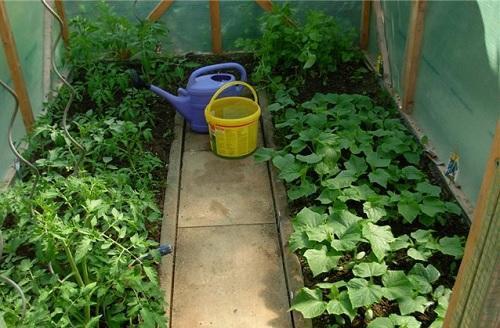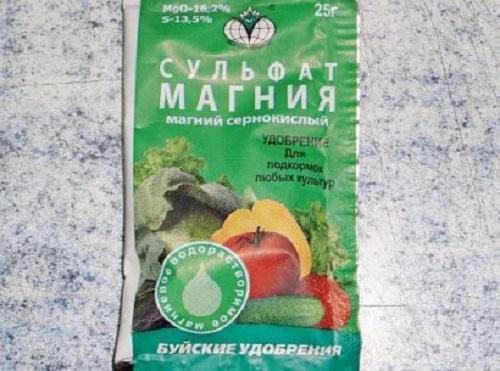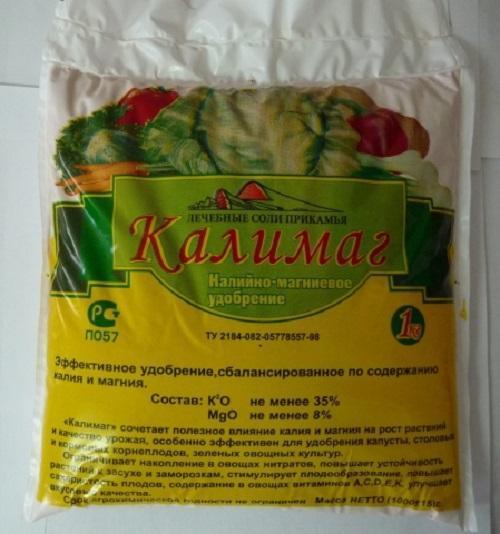Magnesium fertilizers for tomatoes, cucumbers and potatoes
 In modern gardening, magnesium fertilizers are simply indispensable. They not only have a positive effect on the overall development of crops, due to which they grow faster and more actively assimilate certain microelements, but also are the key to a high-quality and timely harvest. It is magnesium that is responsible for the accumulation of oils, fats and other substances in the ovary and leaves that accelerate the ripening of fruits. In addition, magnesium fertilizers promote the accumulation of sugars and starch in fruits, which is especially important when growing potatoes, cucumbers and tomatoes. With timely feeding, root crops grow large, tomatoes - sweet, and cucumbers - juicy.
In modern gardening, magnesium fertilizers are simply indispensable. They not only have a positive effect on the overall development of crops, due to which they grow faster and more actively assimilate certain microelements, but also are the key to a high-quality and timely harvest. It is magnesium that is responsible for the accumulation of oils, fats and other substances in the ovary and leaves that accelerate the ripening of fruits. In addition, magnesium fertilizers promote the accumulation of sugars and starch in fruits, which is especially important when growing potatoes, cucumbers and tomatoes. With timely feeding, root crops grow large, tomatoes - sweet, and cucumbers - juicy.
One of the advantages of using magnesium fertilizers is the complete elimination of magnesium overdose. Even with excessive application, the plants assimilate only the required amount of the trace element, and the surplus remains in the ground, due to which a good yield remains for several more seasons.
Read also the article in the topic: urea fertilizer use in the garden harm or benefit!
Some of the most common and widely used magnesium fertilizers include:
- magnesium sulfate;
- kalimagnesia (kalimag);
- magnesium nitrate (magnesium saltpeter).
Magnesium sulfate

The preparation contains about 17% magnesium and 13% sulfur. To plant potatoes to grow faster, magnesium sulfate or magnesium sulfate it is recommended to use it as the main top dressing with direct application of up to 20 g of the drug per 1 sq. m. plot for spring digging. As additional nutrition in the phase of active growth, it is necessary to water the bushes with a solution twice a month (35 g of magnesium sulfate per bucket of water). If signs of an acute magnesium deficiency are detected, spray the potatoes on the leaf (20 g of the preparation for 10 liters of water).
On the plot for tomatoes and cucumbers for digging, it is enough to add 10 g of magnesium sulfate per 1 sq. m. For irrigation, you should use a solution of 30 g of the drug per bucket of water, and for spraying, make the concentration half as much.
After the direct application of magnesium sulfate to dry soil, it must be watered in the next two days for the drug to start working.
Kalimagnesia

Contains 10% magnesium, potassium and sulfur. When planting potatoes, put 1 tsp in each hole. drug. Dig up the plot for tomatoes and cucumbers in the spring before planting crops with the introduction of 10 g of potassium magnesium per 1 sq. m. For foliar dressing, dissolve 20 g of the drug in a bucket of water.
Magnesium nitrate

Contains up to 16% magnesium and nitrogen in nitrate form. It is recommended to use for root (10 g per 10 l of water) and foliar dressing (20 g per 10 l of water) throughout the entire growing season of crops. An interval of 2 weeks should be maintained between dressings.